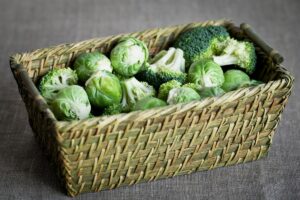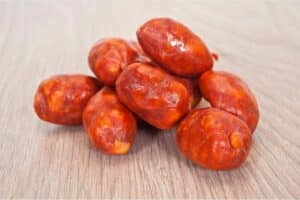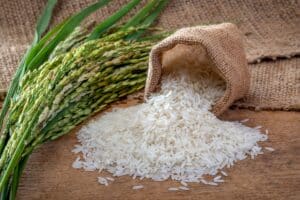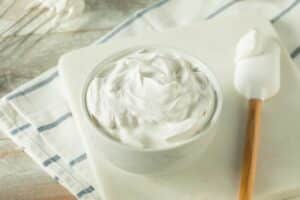Baking powder and cream of tartar have many similarities but differ significantly in key ways.
For instance, one is a stabilizing agent, and the other is a leavening agent.
If you often bake pastries, you should always have both on hand. Some recipes will even require both.
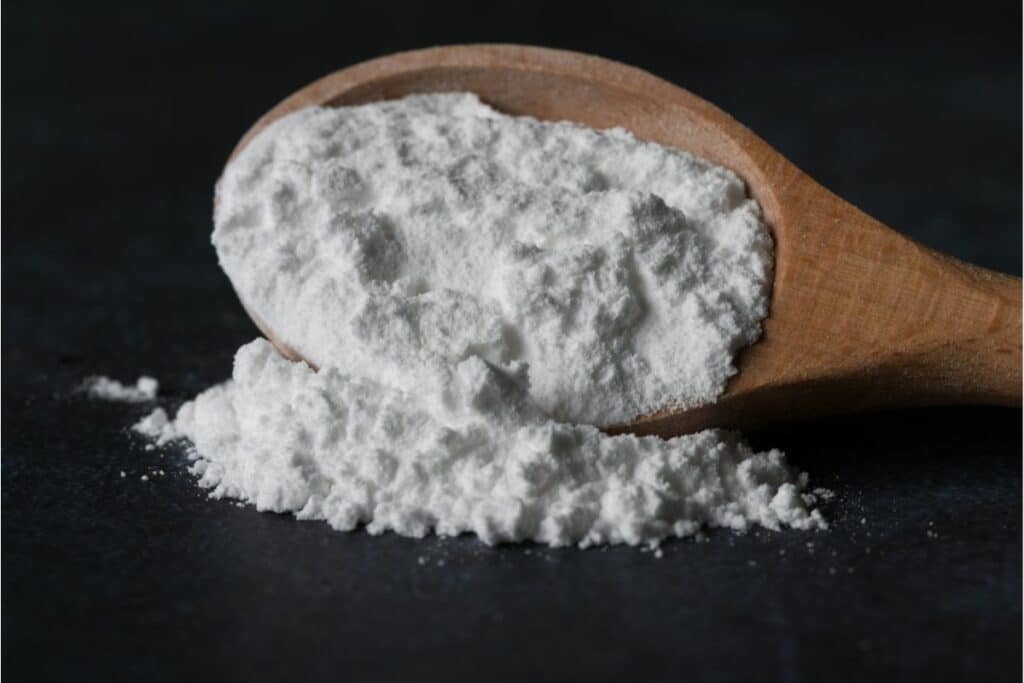
In this guide, I’ll talk more about baking ingredients and how they compare.
What’s The Difference Between Baking Powder And Cream of Tartar
Let’s start by understanding what each of these ingredients is and the differences between them.
Baking Powder
Baking powder is a dry chemical leavening agent used in baked goods like cakes, muffins, and cookies to help them rise.
It is composed of baking soda, cream of tartar, and cornstarch.
When mixed with liquid ingredients and heated in the oven, an acid-base reaction produces carbon dioxide bubbles that cause batters and doughs to expand in volume and become light and fluffy baked goods.
Cream Of Tartar
Cream of tartar is an acidic white powder used in baking and candy making. Chemically known as potassium bitartrate, it is a byproduct of winemaking.
When grape juice ferments into wine, cream of tartar crystallizes and deposits inside the wine barrels.
The powder is extracted and used as an ingredient to activate baking soda, stabilize egg whites, prevent sugar syrups from crystallizing, and add tart flavor.
It helps baked goods rise and gives them a tender texture.
Baking Powder Vs. Cream Of Tartar: Formulas
The formulas I’ve discussed above make baking powder and cream of tartar leavening agents, but cream of tartar offers a little bit more — like stabilizing whipped egg whites and preventing sugar from crystallizing.
Baking Powder Vs. Cream Of Tartar: Function
To make baking powder, you need an alkali, such as baking soda, an acid, such as cream of tartar, and a binder, such as cornflour.
Baking soda and cream of tartar combine to produce carbon dioxide bubbles – giving baking powder a leavening function.
Tartaric acid, on the other hand, is a waste product of wine production that makes cream of tartar. It’s somewhat more versatile than baking powder.
It maintains whipped cream and egg whites solid, prevents sugar crystals, and preserves the color of boiling vegetables.
Cream of tartar may also be used to remove rust and stains.
Baking Powder Vs. Cream Of Tartar: Using Them In Recipes
Baking powder is a leavening agent and can be single-acting or double-acting.
Single-acting baking powders are fast-acting baking powders, which means they act quickly when moistened.
Yet, the majority of commercial baking powders have dual-action. A baking powder with dual-action will react twice: once when mixed with liquid and another time when heated.
Baking powder is used in cakes, pancakes, waffles, cookies, syrup sponges, and pies — or in other words, anything bake and batter-related.
On the other hand, cream of tartar is commonly used in recipes like meringue pie and soufflé to keep their lofty rise.
Pancakes, cookies, or any recipe that doesn’t call for yeast will also get fluffier if you add cream of tartar to it.
Pancake and syrup recipes, as well as frosting and icing recipes, come out creamier.
Baking Powder Vs. Cream Of Tartar: Storage And Shelf-life
They are the same regarding storage; you need to keep both products in an air-tight container and a place without sunlight.
Cream of tartar should always be stored at room temperature since it’s sensitive to heat, moisture, and light. The same goes for baking powder.
Fun tip: If you want to check the quality of the baking powder, add 1/2 tsp in 1 cup of boiling water. If bubbles start to form, your baking powder is of great quality; if not, you should get rid of it.
The shelf life of baking soda and cream of tartar is comparable, too.
Cream of tartar has a two-year maximum shelf life, whereas baking powder has a shelf life of between 1 and 2 years.
The product’s expiration date should always be checked before use.
Baking Powder Vs. Cream Of Tartar Comparison Table
| Category | Baking Powder | Cream of Tartar |
| Formula | Cream of tartar + baking soda | Tartaric acid |
| Usage | Leavening agent | Leavening agent, stabilizer, color perseverer, and cleaning agent |
| Function | Helps batter rise and remain light and airy | Helps batter rise and become fluffy, stops sugar from crystalizing, stabilizes the texture of baked goods, preserves the color of boiled veggies, removes rust and stains |
| Type of recipes | Cakes, pancakes, waffles, cookies, syrup sponge, pies | Meringue pie, soufflé, pancakes, cookies, pancake syrup, frosting and icing |
| Storage | In an air-tight container, at room temperature in a place without sunlight | In an air-tight container, at room temperature, in a place without sunlight |
| Shelf life | 1 to 2 years | 1 year |
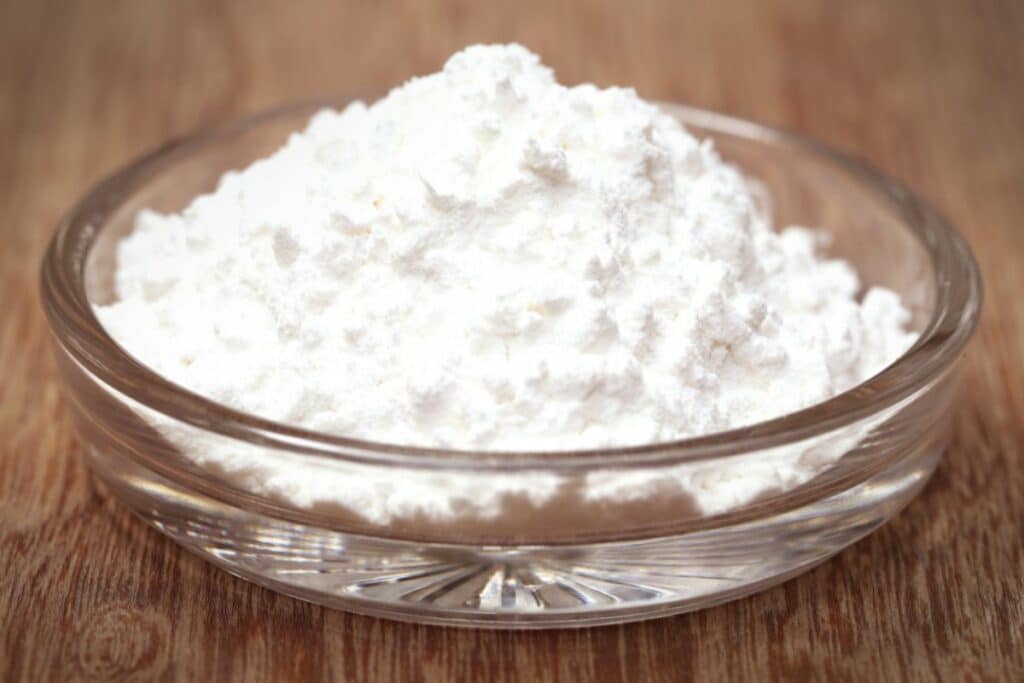
Can I Substitute Baking Powder for Cream of Tartar And Vice Versa?
Yes, you may switch baking powder for cream of tartar and vice versa.
You may use 1.5 tsp baking powder for 1 tsp cream of tartar. This ratio can be used in any recipe without changing the flavor or texture of the finished dish.
On the other hand, if you want to use cream of tartar instead of baking powder, remember to include baking soda.
If you want to make 1 tsp baking powder, mix ½ tsp cream of tartar with ¼ tsp baking soda.
If you wish to store it for a few weeks, you may include ¼ tsp cornstarch.
Cornstarch prevents the powder from becoming dry and clumpy – you can skip this ingredient if you are using your baking powder right away.
Other Sustitiues For Cream Of Tartar
Other good alternatives to cream of tartar include:
- Freshly squeezed lemon juice – The acidity helps activate baking soda. Use 1 1⁄2 teaspoons of lemon juice for every 1 teaspoon cream of tartar.
- White vinegar – Again provides acidity. Use 1 teaspoon white vinegar for every 1 teaspoon cream of tartar.
- Buttermilk – Contains lactic acid that reacts with baking soda. Replace the liquid in the recipe with buttermilk.
- Yogurt – Also contains lactic acid. Use plain yogurt to replace the liquid.
- Sour cream – Contains citric and lactic acids. Replace liquid with sour cream.
- Citrus juice – Lemon, lime, orange juice all provide acidity. Use 1 teaspoon juice for 1/2 teaspoon cream of tartar.
- Powdered citric acid – A very close match for cream of tartar. Use same amount in the recipe.
Molasses – Provides some acidity to activate baking soda. May alter flavor profile.
Can I Skip Baking Powder Or Cream Of Tartar In A Baking Recipe?
If you don’t use baking powder, your baked goods will still taste good, but they won’t fluff since the chemical processes needed for that to happen won’t take place.
The same goes when leaving out the cream of tartar. Your desserts will still taste fantastic, even if they aren’t as fluffy as you want.
Also, remember that the peaks might crumble if you’re making meringue.
Conclusion
Overall, the fundamental distinction between baking powder and cream of tartar is that baking powder contains cream of tartar and baking soda! So, sharing the same ingredient makes them both leavening agents.
However, creating air bubbles in the dough isn’t cream of tartar’s only specialty. This powder also acts as a stabilizer and prevents sugar from crystallizing.
FAQs
One quarter teaspoon cream of tartar per one teaspoon baking powder.
Cream of tartar provides acidity to activate leaveners and stabilize egg foams.
Too much cream of tartar can make baked goods taste bitter or tart.
Yes, cream of tartar activates baking soda to help recipes rise and improves texture.
No, cornstarch does not provide the necessary acidity; it serves different purposes.


